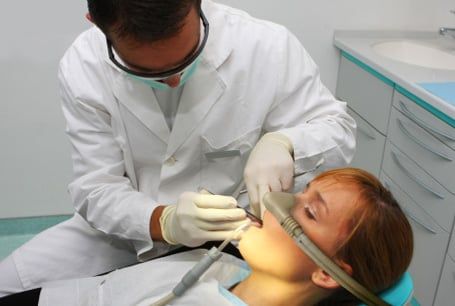Sedation Dentistry
Laughing Gas
Nitrous oxide, better known as laughing gas, is a colorless, odorless gas that creates a "warm and fuzzy" feeling when it is inhaled. Kids will typically feel less anxious and may even giggle. Laughing gas is the mildest form of sedation and will not make a child sleepy or put them to sleep. Laughing gas is administered through a scented nose mask. The gas will take effect within a few minutes and Dr. Sahar will monitor the levels throughout your child’s treatment. Once treatment is over, 100% oxygen is administered and the effects of laughing gas take only about 5 minutes to wear off. This means that your child can go back to their regular daily routine after their appointment.

Oral Sedation
Dr. Sahar is certified in pediatric oral sedation. A sedative is administered to your child orally and usually takes about 30 to 45 minutes to take effect. Laughing gas is also used in conjunction to ensure the child is more comfortable. Children can feel drowsy but they typically are awake during the treatment and the sedation usually wears off after 4 to 6 hours. When laughing gas is not effective enough, oral sedation can be a great alternative.

IV Sedation & General Anesthesia
For a child who is unable to complete treatment awake, IV sedation or general anesthesia may be the answer to provide safe and effective treatment. During this type of sedation, a child will be completely asleep while Dr. Sahar completes all of the dental work. Dr. Sahar works with a highly experienced anesthesiologist who will sedate and monitor the child during the entire duration of the treatment.
Dr. Sahar makes your child's comfort her number one priority and ensures each visit to the dentist is a positive one. Call our office to learn more!
